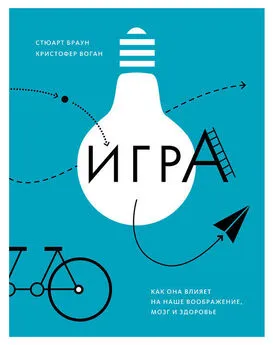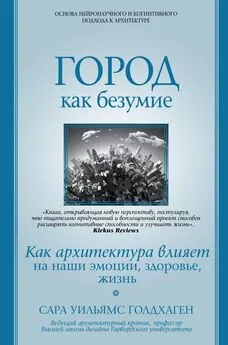Виктория Уильямсон - Мы – это музыка. Как музыка влияет на наш мозг, здоровье и жизнь в целом
- Название:Мы – это музыка. Как музыка влияет на наш мозг, здоровье и жизнь в целом
- Автор:
- Жанр:
- Издательство:Манн, Иванов и Фербер
- Год:2016
- Город:Москва
- ISBN:978-5-00057-660-1
- Рейтинг:
- Избранное:Добавить в избранное
-
Отзывы:
-
Ваша оценка:
Виктория Уильямсон - Мы – это музыка. Как музыка влияет на наш мозг, здоровье и жизнь в целом краткое содержание
Прочтение этой книги, возможно, даст идеи, как правильно применить силу музыки в ваших обстоятельствах.
Эта книга будет интересна в первую очередь тем, кто интересуется влиянием музыки на человеческую психику и физиологию.
На русском языке публикуется впервые.
Мы – это музыка. Как музыка влияет на наш мозг, здоровье и жизнь в целом - читать онлайн бесплатно полную версию (весь текст целиком)
Интервал:
Закладка:
Многие студенты, коллеги и друзья не жалели времени, обсуждая и эту книгу, и психологическое воздействие ее написания на автора. Я просто не могу перечислить здесь всех этих великодушных людей, но особого упоминания заслужили: Джойдип Бхаттачария, Рианнон Джонс, Памела Хитон, Даниэль Мюллензифен, Джорджина Флориду, Морис Дуглас, Даниэла Ричардсон и команда из Барселоны.
Папа, спасибо тебе за «Укрощение младенца», уроки музыки, инструменты, за то, что ты возил меня в дома музыки; спасибо за динамики, пластинки, полные музыки праздники и за то, что ты прочел каждую главу моей книги с теми же энергией и юмором, как когда-то проверял мое домашнее задание по математике. Ты – мой герой!
И наконец, эта книга посвящается моей семье – удивительной, любящей, полной энтузиазма, всегда готовой меня поддержать и единственной в своем роде.
Сноски
1
Сверхпроводящий квантовый интерференционный датчик. Прим. перев .
2
Ударный инструмент из двух горизонтальных тарелок на стойке с педалью; при нажатии педали верхняя тарелка ударяет о нижнюю. Прим. перев.
3
Смещение акцента с сильной доли такта на слабую. Прим. ред.
4
Patrik Juslin and John Sloboda, Handbook of Music and Emotion: Theory, Research, Applications . Прим. перев.
5
Рефлексы ствола мозга, выработка условного рефлекса, эмоциональное заражение, ожидания, память и зрительные образы. Прим. авт .
6
Миелиновая оболочка – защитный слой, покрывающий нейрон снаружи. Она необходима для нормальной работы нервной системы. Прим. авт.
7
Транслиминальность – состояние трансформации личности, преодоление порога аккультурации. Прим. ред.
8
Этот временной показатель сочетает годы жизни, утраченные из-за преждевременной смертности и в связи с состоянием здоровья, не отвечающего критериям полного здоровья. Прим. перев.
Комментарии
1
Mayle, P. (1978), Baby Taming. New York: Crown.
2
Changizi, M. (2011), Harnessed: how language and music mimicked nature and transformed ape to man. Dallas: Benbella Books.
3
Ruthsatz, J., Ruthsatz, K., and Stephens, K.R. (2013), ‘Putting practice into perspective: Child prodigies as evidence of innate talent’, Intelligence , http://dx.doi.org/10.1016/j.intell.2013.08.003.
4
Pujol, R., Laville-Rebillard, M., and Lenoir, M. (1998), ‘Development of sensory neural structures in the Mammalian cochlea’, in: E.W. Rubel, A.N. Popper and R.R. Fay (eds.), Development of the auditory system. New York: Springer Handbook of Auditory Research (pp. 146–193). Springer-Verlag.
5
Abrams, R.M., et al. (1998), ‘Fetal music perception: The role of sound transmission’, Music Perception , 15, 307–317.
6
Smith, S.L., et al. (2003), ‘Intelligibility of sentences recorded from the uterus of a pregnant ewe and from the fetal inner ear’, Audiology and Neuro-Otology , 8, 347–353.
7
Draganova, R., et al. (2007), ‘Serial magnetoencephalographic study of fetal newborn auditory discriminative evoked responses’, Early Human Development , 83 (3), 199–207.
8
Richards, D.S., et al. (1992), ‘Sound levels in the human uterus’, Obstetrics & Gynecology , 80 (2), 186–90.
9
Ando, Y., and Hattori, H. (1977), ‘Effects of noise on sleep of babies’, Journal of the Acoustical Society of America , 62, 199–204.
10
Granier-Deferre, C., et al. (2011), ‘A Melodic Contour Repeatedly Experienced by Human Near-Term Fetuses Elicits a Profound Cardiac Reaction One Month after Birth’, PLOS ONE , 6 (2): e17304.
11
James, W. (1890), The Principles of Psychology . Cambridge, MA: Harvard University Press (1981).
12
Winkler, I., et al. (2009), ‘Newborn infants detect the beat in music’, Proceedings of the National Academy of Sciences USA , 106 (7):2468–2471; информацию и стимулы можно найти по адресу: http://www.mcg.uva.nl/newborns/.
13
Bull, D., Eilers, R.E., and Oller, D.K. (1985), ‘Infants’ discrimination of final syllable fundamental frequency in multisyllabic stimuli’, Journal of the Acoustical Society of America , 77 (1), 289–295.
14
Nazzi, T., Floccia, C., and Bertoncini, J. (1998), ‘Discrimination of pitch contours by neonates’, Infant Behavior and Development , 21 (4), 779–784.
15
Mampe, B., Friederici, A., Christophe, A., and Wermke, K. (2009), ‘Newborns’ Cry Melody Is Shaped by Their Native Language’, Current Biology , 19 (23), 1994–1997.
16
Falk, D. (2004), ‘Prelinguistic evolution in early hominins: Whence motherese?’, Behavioral and Brain Sciences, 27, 491–541.
17
Cooper, R.P., and Aslin, R.N. (1990), ‘Preference for infant-directed speech in the first month after birth’, Child Development , 61 (5), 1584–1595.
18
Werker, J.F., and McLeod, P.J. (1989), ‘Infant preference for both male and female infant-directed talk: A developmental study of attentional affective responsiveness’, Canadian Journal of Psychology , 43 (2), 230–246.
19
Masataka, N. (2003), The onset of language . Cambridge: Cambridge University Press.
20
Boukydis, C.F., and Burgess, R.L. (1982), ‘Adult Physiological Response to Infant Cries: Effects of Temperament of Infant, Parental Status, and Gender’, Child Development , 53 (5), 1291–1298. Swain, J.E., Lorberbaum, J.P., Kose, S., and Strathearn, L. (2007), ‘Brain basis of early parent-infant interactions: psychology, physiology, and in vivo functional neuroimaging studies’, Journal of Child Psychology and Psychiatry , 48 (3–4), 262–287.
21
Werker, J.F., and McLeod, P.J. (1989), ‘Infant preference for both male and female infant-directed talk: A developmental study of attentional affective responsiveness’, Canadian Journal of Psychology , 43 (2), 230–246.
22
Trainor, L.J., Austin, C.M., and Desjardins, R.N. (2000), ‘Is infant directed speech prosody a result of the vocal expression of emotion?’, Psychological Science , 11 (3), 188–195.
23
Kuhl, P.K., et al. (1997), ‘Cross-language analysis of phonetic units in language addressed to infants’, Science , 277 (5326), 684–686.
24
Burnham, D.K., Vollmer-Conna, U., and Kitamura, C. (2000), ‘Talking to infants, pets, and adults: What’s the difference?’, paper presented at the XIIth Biennial International Conference on Infant Studies, Brighton, UK.
25
Trainor, L.J., and Desjardins, R.N. (2002), ‘Pitch characteristics of infant-directed speech affect infants’ ability to discriminate vowels’, Psychonomic Bulletin and Review , 9, 335–340.
26
Kitamura, C., and Lam, C. (2009), ‘Age-specific preferences for affective intent’, Infancy , 14, 77–100.
27
Sakkalou, E., and Gattis, M. (2012), ‘Infants infer intentions from prosody’, Cognitive Development, 27 (1), 1–16.
28
Pinker, S. (1994), The Language Instinct: How the Mind Creates Language. New York: HarperCollins.
29
Эта фраза относится к использованию данного термина в научной литературе и не подразумевает ссылки на охраняемый авторским правом термин The Mozart Effect®, copyright Don Campbell.
30
Rauscher, F.H., Shaw, G.L., and Ky, K.N. (1993), ‘Music and spatial task performance’, Nature , 365, 611.
31
Rauscher, F.H., Shaw, G.L., and Ky, K.N. (1995), ‘Listening to Mozart enhances spatial-temporal reasoning: Towards a neurophysiological basis’, Neuroscience Letters , 185 (1), 44–47.
32
Rauscher, F.H., and Shaw, G.L. (1998), ‘Key components of the Mozart Effect’, Perceptual and Motor Skills , 86 (3), 835–841.
33
Nantais, K.M., and Schellenberg, E.G. (1999), ‘The Mozart Effect: An Artifact of Preference’, Psychological Science , 10 (4), 370–373.
34
Schellenberg, E.G. (2012), ‘Cognitive performance after music listening: A review of the Mozart effect’, in R.A.R. MacDonald, G. Kreutz and L. Mitchell (eds.), Music, Health and Wellbeing (pp. 324–338). Oxford: Oxford University Press.
35
Husain, G., Thompson, W.F., and Schellenberg, E.G. (2002), ‘Effects of Musical Tempo and Mode on Arousal, Mood and Spatial Abilities’, Music Perception , 20 (2), 151–171.
36
Steele, K.M., Bass, K.E., and Crook, M.D. (1999), ‘The Mystery of the Mozart Effect: Failure to Replicate’, Psychological Science , 10 (4), 366–369.
37
Chabris, C.F. (1999), ‘Prelude or requiem for the “Mozart effect”?’, Nature , 400, 826–827.
38
Schellenberg, E.G. (2012), ‘Cognitive performance after music listening: A review of the Mozart effect’, in R.A.R. MacDonald, G. Kreutz, and L. Mitchell (eds.), Music, health and wellbeing (pp. 324–338). Oxford: Oxford University Press.
Читать дальшеИнтервал:
Закладка:


![Аре Бреан - Музыка и мозг [Как музыка влияет на эмоции, здоровье и интеллект]](/books/1068692/are-brean-muzyka-i-mozg-kak-muzyka-vliyaet-na-emoc.webp)


![Виктория Токарева - Тихая музыка за стеной [сборник]](/books/1102057/viktoriya-tokareva-tihaya-muzyka-za-stenoj-sbornik.webp)




